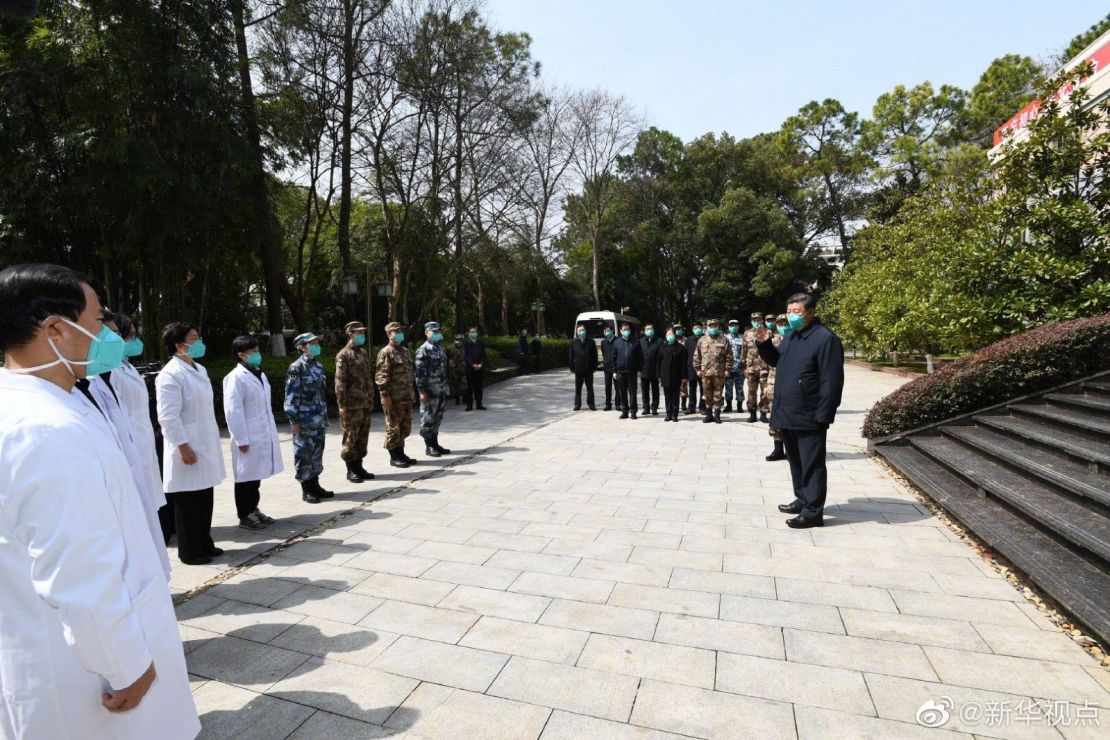Chinese President Xi Jinping has made his first visit to Wuhan since the novel coronavirus outbreak began more than two months ago, as new cases of the virus slowed to a trickle in the country where the disease first emerged.
Xi’s visit to Wuhan – which has been on lockdown for weeks now, with tens of thousands of confirmed cases of the virus and hundreds of deaths – is a major show of confidence in China’s response to the pandemic, underlining a message which has been building in state media that the country has turned a corner.
As of Tuesday, there have been 80,754 cases of the virus confirmed across China, 67,760 of which were in Hubei, the province of which Wuhan is the capital. Of the 3,136 deaths confirmed in China, all but 112 have been in Hubei.
At its worst, Hubei was reporting thousands of new cases per day. On Monday, China’s National Health Commission said there were only 17 new cases confirmed in the province, with two others in other parts of the country – both of which were linked to overseas travel.
The progress in China, which has come on the back of weeks of widespread travel restrictions, government enforced lockdowns and economic pain, is in stark contrast to other parts of the world, where the situation is growing increasingly dire.

Propaganda victory
According to state news agency Xinhua, Xi arrived in Wuhan Tuesday “for an inspection of the epidemic prevention and control work” in the city and surrounding province.
He “will visit and express regards to medical workers, military officers and soldiers, community workers, police officers, officials and volunteers who have been fighting the epidemic on the front line, as well as patients and residents during the inspection,” Xinhua reported.
That Xi can visit the city suggests the government has supreme confidence in his safety and epidemic controls put in place there. The closest he previously came to the frontlines of the outbreak was visiting virus treatment centers in the capital Beijing, which has far fewer cases than Wuhan.
Senior government officials, including Vice Premier Sun Chunlan and Premier Li Keqiang, have visited Wuhan, but it was assumed until now that the risk to Xi, even if slight, was not worth the potential cost. Since taking office in 2011, Xi has centralized authority massively, becoming China’s most powerful leader since Mao Zedong, and were the 66-year-old to fall ill, that could seriously destabilize the political system.
His presence in Wuhan also caps a major reversal in how he has been positioned in Chinese state media. In the early weeks of the virus, Xi disappeared from front pages and major newscasts – which he typically dominates – though reports emphasized he was working in the background to direct the country’s response.

Xi’s low profile led to speculation that the propaganda apparatus was trying to ensure that he did not take any blame for the apparent bungling and alleged covering up of the initial response to the virus. Xi has increasingly come to the fore in recent weeks, however, as China has appeared to successfully brought the outbreak under control.
If that assessment is accurate, then Xi is now ready to reap the praise for having contained the virus. A book published late last month by the Central Propaganda Department – in six different languages – recounts how China won the “people’s war” against the disease, “under the centralized and unified leadership of the Communist Party Central Committee with Comrade Xi Jinping at the core.”

